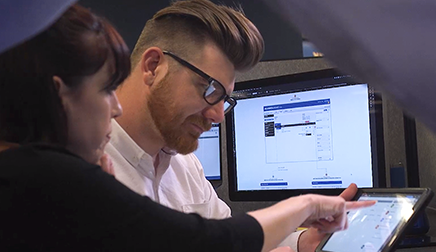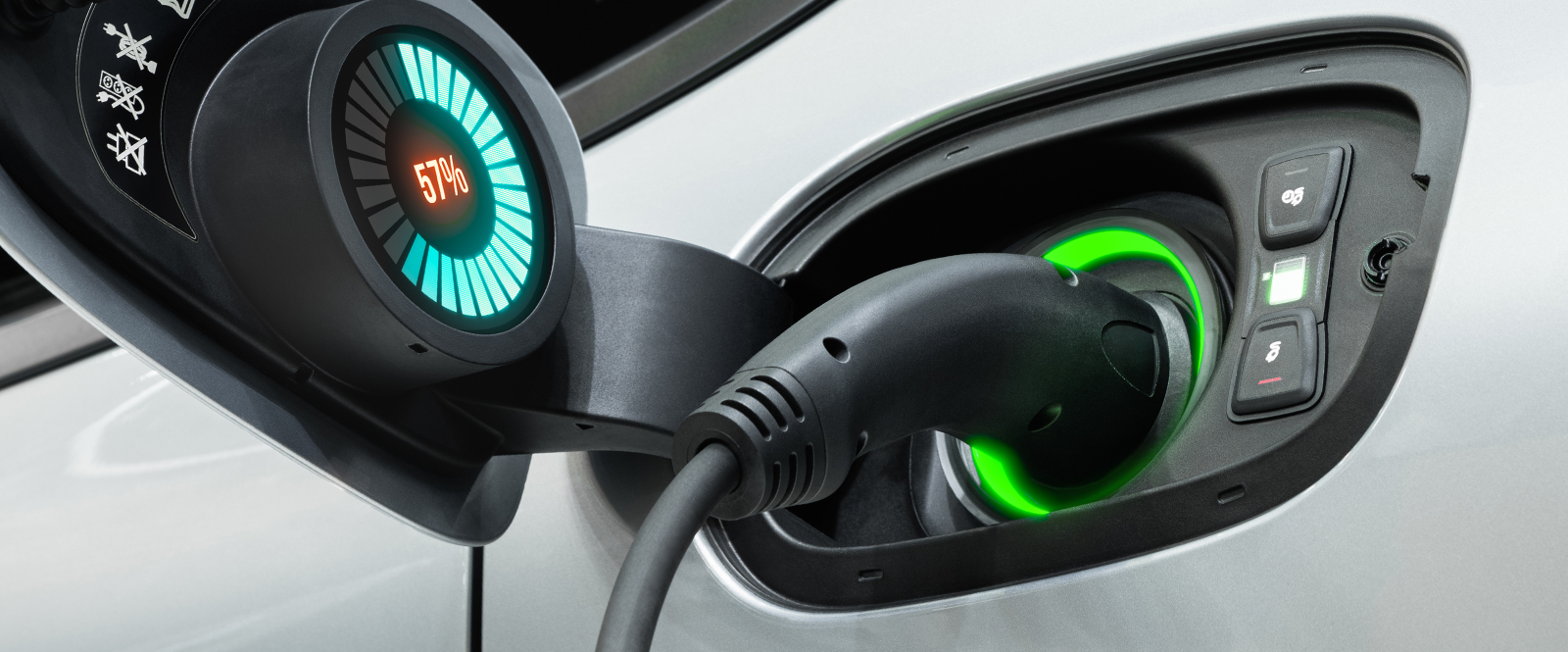
With EV demand surging, can charging access keep up?
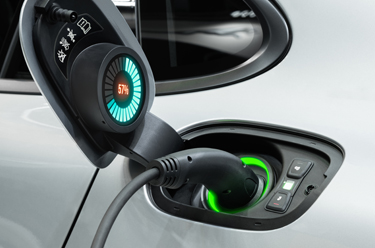
Demand for electric vehicles continues to grow as gas prices hover around a record-high national average of $5 per gallon. Sales in Q1 2022 of 173,561 electric vehicles represents an increase of 76 percent from Q1 2021.
Affordable electric vehicles continue to be in short supply while the Tesla Model Y accounted for nearly one out of every three new U.S. electric vehicles registered in the first quarter of 2022. A recent report tracking car owner ratings, shows Tesla tops the list of most satisfied customers in the entire auto industry.
While current EV owners report high satisfaction with home charging, we’ll also take a look at the current state of public charging, government funding, and increasing demands on the electrical grid.
All’s well on the home front
There are about 2 million EVs on the road in the U.S., up six-fold since 2016.
Home charging is a significant part of the electric vehicle ownership experience, with 88% of owners who say they charge their vehicle at home “often” or “always,” according to the inaugural J.D. Power U.S. Electric Vehicle Experience Home Charging Study, released in February.
Overall home charging satisfaction is highest among EV owners who install a Level 2 permanently mounted charging station (see below for more on different levels of chargers), with a score of 749 (on a 1,000-point scale), while satisfaction is notably lower among EV owners who use a much slower Level 1 charger, just 574.
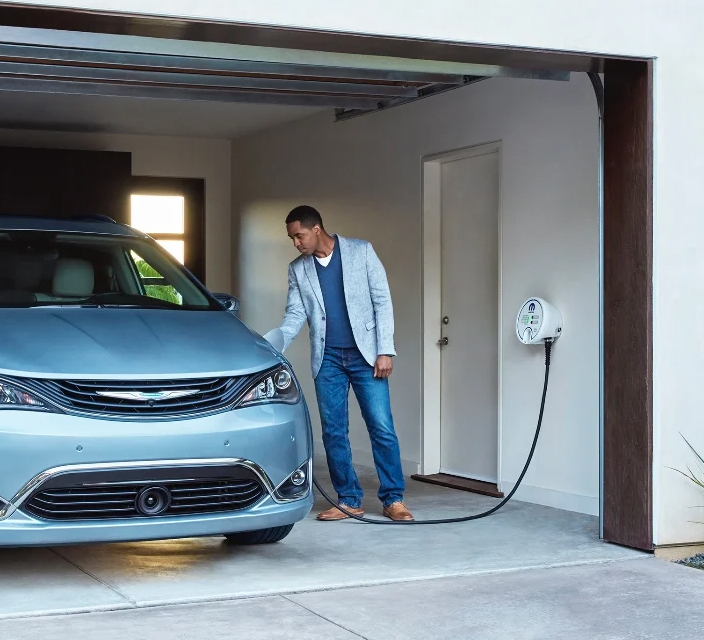
“Permanently mounted chargers are a significant expense, so owners of such chargers need to determine if it’s the right investment for them based on their usage and vehicle,” said Brent Gruber, senior director of global automotive at J.D. Power, in a statement. “Many such owners need to upgrade their service panel to accommodate their EV’s amperage, and spend thousands of dollars to have a charger permanently installed. The upside for those who have done so is higher satisfaction.”
Three EV Charging Levels
Level 1 charging uses a common 120-volt household outlet. Every electric vehicle or plug-in hybrid can be charged on Level 1 by plugging the charging equipment into a regular wall outlet. Level 1 is the slowest way to charge an EV and can take all day (and night) for an EV. It adds between 3 and 5 miles of range per hour.
Most EV owners choose to install Level 2 charging equipment at their residence, because it charges the vehicle up to 10 times faster than Level 1 charging, so the vehicle will be completely charged overnight, even if it’s plugged with a nearly empty battery.
However, Level 2 requires a 100-amp 208-240V dedicated circuit and a heavy, costly supply line from the breaker box – not exactly a DIY electrical project.
Level 2 chargers cost between $400 and $1,000, depending on the power and features available. Installation can run up to $1,000, and into the thousands if you require a service upgrade to add the additional circuit needed.
If you live in an old house with a small panel, you might even need to upgrade to a 400-amp panel, which could cost as much as $4,000, according to HomeAdvisor.
Level 3 charging is the fastest type of charging available at public charging stations or the proprietary Tesla Supercharging network, upping your range at a rate of 3 to 20 miles of range per minute. Unlike Level 1 and Level 2 charging that uses alternating current (AC), Level 3 charging uses direct current (DC). The voltage is also much higher than Level 1 & 2 charging, which is why you don’t see Level 3 chargers installed at home.
| EV Charging Speed on Level 1,2,3 Chargers | |||
|
Charging Level |
Power Delivery |
Range Added per Hour |
Time to Charge 60kWh EV |
| Level 1 | 1-1.4 kW | 3-5 Miles | 30-40 Hours |
| Level 2 | 3.9-19.2 kW | 12-80 Miles | 2.5-4.5 Hours |
| Level 3 | 24-300 kW | 75-1200 Miles | 30-40 Minutes |
|
Time to charge EV with a 60-kWh battery is the time to raise the battery's charge level from 10% to 80% |
|||
Players in the evolving EV charging network(s)
We’ve been refueling our cars with gasoline for more than a hundred years. The refueling process is relatively straightforward and everybody understands how it’s done: you choose from regular, mid-grade, or premium gasoline (or diesel), and you’ve filled up your tank in less than five minutes, give or take a trip inside for Little Debbies or Doritos.
With electric vehicles, however, refueling – the recharging process – isn’t always quite as simple, or as quick.
That’s because currently in the U.S., “the” electric vehicle charging network – analogous to the nation’s gas stations – does not exist. Instead, there is a patchwork of networks that sometimes frustrate EV users, especially when tackling longer distances.
The Department of Energy actively tracks the total number of public charging stations (the total number of charging ports is higher) in the country, a number that now stands at 55,000. If that sounds like a lot, consider that there are close to three times as many gas stations.
According to a recent McKinsey & Company Report, about 20-times more charging stations will be needed than are now available, up to 1.2 million public chargers.
Meanwhile, the benefits of adding chargers have been complicated by the ad hoc way in which networks were set up: Tesla, which represents 80% of the EV market in the U.S, started its own proprietary network in 2012, before public options were really available. Today, the Tesla Supercharger network includes over 3,500 stations across the globe, with approximately 1,200 located in North America, a number that will continue to grow.
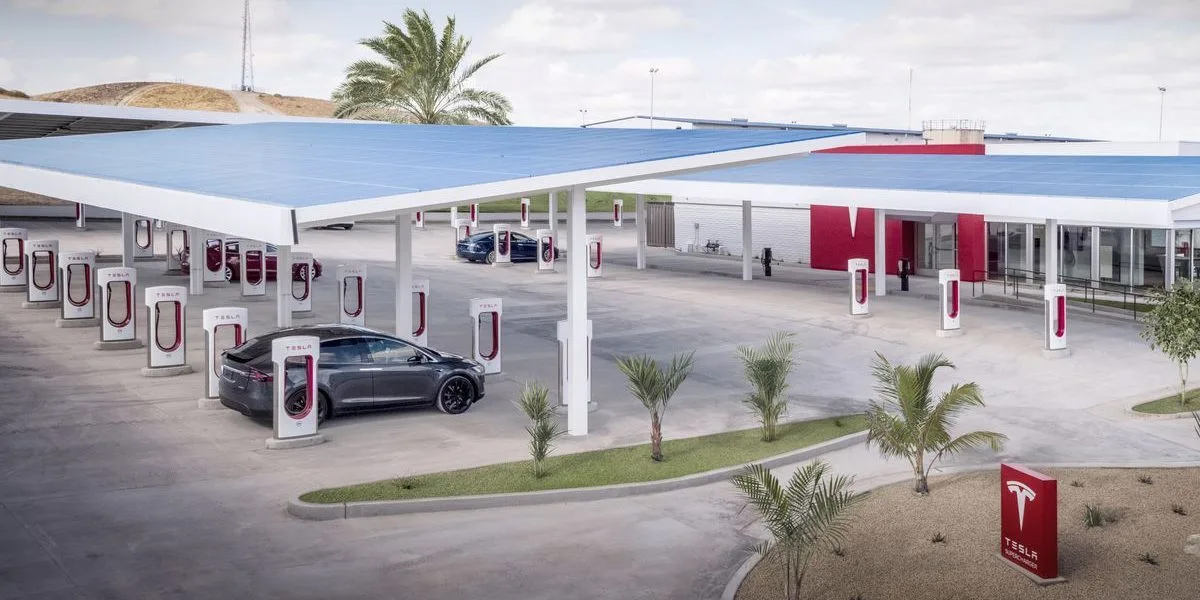
Larger Supercharger stations – in areas where EVs are more popular – may have over 50 stalls, while the average number of stalls is 10.
Although Tesla’s Supercharger network is currently closed to anyone without a Tesla, that may be changing. In May, Tesla’s CEO Elon Musk said it will add CCS (Combined Charger System) connectors – the standard across Europe – to its Supercharger stations in the United States that will allow non-Tesla EV owners access the extensive charging network, but didn’t offer a timeline.
Electrify America was established in 2017 as a result of a settlement agreement in the wake of Volkswagen’s Clean Air Act violations and is currently the nation’s largest public fast-charging network. The company says it is on track to have more than 1,800 charging stations in the U.S. and Canada by 2026. Meanwhile, third-party networks, like EVgo, were constructed like a club, offering members access to charging for a fee. In 2019, EVgo and Electrify America announced an agreement to allow each other’s members to use any of the roughly 3,000 chargers from both companies.
Rivian announced in March 2021 that it would create two proprietary networks. One – known as “Waypoints” – will have 10,000 Level 2 chargers open to all across the U.S. and Canada. The other, the Rivian Adventure Network, plans to open 3,500 fast chargers at 600 sites, including national parks and other popular destinations that will only be available to Rivian owners. No dates have been specified.
Additionally, private partnerships are offering consumers more options for charging in public. In May, Bank of America announced it will add 350 chargers at branches across the U.S. by the end of 2022, more than double the number today. And it’s not alone.
Chase Bank announced in April that it is partnering with EVgo to install electric vehicle charging stations at select branches in the U.S. Chase has just over 4,700 locations across the lower 48 states.
Chargers are moving from remote locations to places where motorists can feel more secure while also being entertained or productive while waiting for a battery to top off. Companies like Electrify America, ChargePoint, and EVgo are pairing up with department stores, banks, fast food outlets, and other business that can spare space for chargers.
Charging ahead, but will it be fast enough?
The charging outlook for states where EVs are most popular improved from 2020 to 2021, according to a study published by the driver education company Zutobi. New Jersey had a 43.1 percent increase in public charging ports and Florida a 36.3 percent jump; California and Arizona ports increased 29.0 percent and 28.1 percent, respectively. It shows the growth overall in public charging outlets was up 31 percent to 128,554 nationally.
Many of these chargers are replacing parking meters, readily located where they can be used every day.
Despite this growth, it also reveals that some states in the U.S. with the most battery-electric vehicles registered also have the fewest public charging ports for those vehicles, while others with relatively few EVs on the road have an overabundance.
Anecdotally, Mark Rechtin writes in Wards Auto that, “Finding a proper place to charge in Los Angeles is difficult – even though it’s the city with the most registered EVs in America.” He describes needing to top off the pack before a lengthy trip the next day. “I went to the nearest “fast” charger near my home – a 50-kW EVgo station 3 miles (4.8 km) away – to discover owners of internal-combustion vehicles had passive-aggressively parked in front of two of the three plugs in a relatively open parking lot. In BEV terms, we call that being ‘ICEd.’”
But that’s changing. Soon, nearly 500 public EV chargers will be available to Los Angeles residents, including designated disadvantaged areas such as South Los Angeles, Boyle Heights and Pico-Union. Partially funded by the Los Angeles Department of Transportation and CARB, the initiative is operated by Blink Charging.
“Many of these chargers are replacing parking meters, readily located where they can be used every day, said Brendan Jones, president of Blink Charging. “These are in low-income areas and these are going to provide access,” he added.
Another problem that Rechtin points out is ‘electric range rage,’ noting that “You will be shocked to find that you will only get about 40 percent of the offered range, that is if you drive at normal cruising speeds with the air conditioning on, the media system doing its stuff and the heater making you snug; just like drivers of ICE-powered cars enjoy without worry.”
On most EVs, extended motorway fast-lane cruising cuts range by between 30 and 50 percent. The impact of cold weather on range can mean up to a 30 percent range cut. Similarly, the impact of full loads of people and luggage is a reality, as is the necessity of regularly filling to only 80 percent of capacity to protect the life of the battery.
Wall St. Journal writer Rachel Wolfe discovered this the hard way when she rented a brand-new Kia EV6 to test its feasibility on a four-day road trip from New Orleans to Chicago and back again. (She says she wouldn’t do it again.) Although she saved $100 compared to filling up on gas, she spent more time charging (14 charging stops over the 4 days required 18 hours of waiting) than she did sleeping.
You will be shocked to find that you will only get about 40 percent of the offered range, that is if you drive at normal cruising speeds with the air conditioning on, the media system doing its stuff and the heater making you snug; just like drivers of ICE-powered cars enjoy without worry.
Funding for 500,000 new electric vehicle charging stations
In November 2021, the U.S. Congress passed H.R. 3684, the Infrastructure Investment and Jobs Act, also known as the Bipartisan Infrastructure Bill. It provides the largest investment to date in electric vehicle infrastructure and establishes a path to meet the goal of having zero-emissions vehicles make up 50 percent of all new vehicles sold in the U.S. by 2030.
The legislation allocates $7.5 billion in funding for the construction of a national network of 500,000 new electric vehicle charging stations. The money is split into $5 billion in funding for states and $2.5 billion in grants for communities and corridors to establish electric vehicle charging stations, especially in underserved and rural communities.
Additionally, in June, the administration proposed a rule that would set minimum standards and requirements for federally funded electric vehicle charging stations and ensure that a national EV charging network is accessible, user-friendly and interoperable among different charging companies and across a broad range of vehicles, White House and administration officials said.
The proposed rule includes a requirement to build EV charging stations every 50 miles, no more than 1 mile off the highway, and with a focus on the interstate system and alternative fuel corridors. Stations also would be required to have at least four 150-kilowatt direct-current fast charging ports capable of simultaneously charging four EVs.
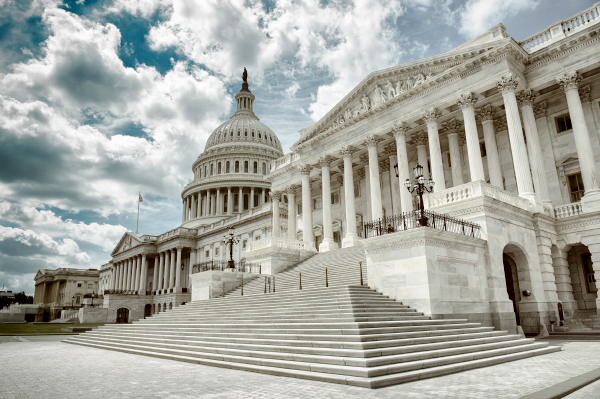
It also requires real-time information on station location, availability and pricing, and compliance with the Americans with Disabilities Act and other relevant state and federal requirements, officials said.
The EV charging infrastructure also would be required to operate on the same software platforms across states, and there would be data submission requirements to create a public EV charging database as well as network connectivity requirements to enable secure remote monitoring, diagnostics, control and updates.
More specifically, the rule would require that chargers communicate with EVs through the industry-standard CSS charging port type, which would accommodate a baseline of vehicles as well as EV charging adapters.
The proposed rule would require consistency in EV charger installation, operation and maintenance. It also would require chargers to be working 97 percent of the time, noted Stephanie Pollack, deputy administrator for the Federal Highway Administration.
Adding clean electricity to the power grid
Converting the nation’s fleet of automobiles and trucks to electric power is a critical piece of the battle against climate change. By 2035, as the Washington Post reports, the chief automakers will have turned away from the internal combustion engine, saying that they will produce only “electrified” cars by some specific date in the coming decades.
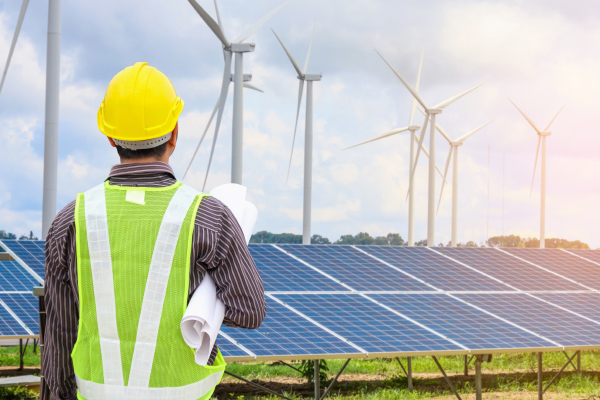
So it’ll be up to the grid to fuel all those new electric cars, trucks and buses. While the United States is hitting some significant benchmarks in the transition to greener electricity, the electric grid will be challenged by the need to deliver clean power to all those vehicles. Adding clean electricity to the power grid has become an increasingly complicated undertaking, given inadequate transmission lines and long delays patching wind and solar projects into a national grid infrastructure.
The Department of Energy says that transmission systems need to be expanded by 60 percent by 2030 to meet the administration’s goals. And they may need to triple in capacity by 2050.
Over the last decade, the time it takes to get a project online has jumped from two years to longer than three and a half years, according to the Lawrence Berkeley National Laboratory. Its researchers say grid operators are taking longer to study project viability and are overwhelmed by a dramatic rise in the number of projects in the queue. There are also concerns around the world that energy shortages prompted by Russia’s invasion of Ukraine and high gas prices driven by inflation threaten to threaten to derail the energy transition.
Putting heat on the grid
Today, the U.S. electric grid struggles to function in times under ‘normal’ seasonal stress, and fails altogether too often for comfort, as widespread blackouts in California, Texas, Louisiana, and elsewhere have shown.
General Motors announced in March a pilot program with Pacific Gas and Electric Co. in California that would make its electric vehicles capable of powering a home in the event of a power outage or grid failure. "This is really significant because it's another benefit of owning an electric vehicle," GM CEO Mary Barra said on CNBC's "Squawk Box." The move matches similar capabilities by other automakers, including Ford’s new F-150 Lightning.
Delayed impact on the automotive repair industry
At the National EV Charging Summit in January, Fred Hules Jr., chairman of the Automotive Service Association (ASA), said “It’s important that independent automotive repair shops be included in the conversation about EV infrastructure. In addition to accessibility of EV charging stations, shops must have access to training, data, and the tools necessary for the repair of these vehicles.
While the overall number of EVs is still a very small slice of the more than 280 million vehicles in operation, U.S. sales of electric vehicles are expected to increase significantly this decade. Current projections, however, show that by the end of 2030, EVs will still comprise only a relatively small percentage of vehicles in operation and the number of internal combustion engine vehicles (ICE) will actually increase by 20 million.
So while automotive repair shops will want and need to stay on top of the latest EV trends and technologies, there’s no need for panic: immediate impacts to automotive repair shops look to be minimal for the immediate future.
For the latest OEM information and procedures on electric vehicles, check out ALLDATA.com.
Where to charge up? Yup, there’s an app for that.

To find electric vehicle public charging stations in your area, check out popular apps like PlugShare, ChargeHub, and A Better Route Planner. Along with these apps, there are other ways owners can find a place to juice up their vehicles. All automotive brands have downloadable apps for their EV drivers, including BMW, General Motors, Audi, Hyundai, Nissan, Ford, and Volvo.
Some vehicles, like Tesla models, also have charging station maps embedded in their dashboard screens(no phone required). Simply tap the desired supercharging station name on the display to receive turn-by-turn directions. The information is updated frequently.
Independent charging station networks, such as Electrify America, usually have their own apps that show all the company’s locations on a map, with real-time availability updates. Additionally, there is often the added ability to pay for charging though the app.
Want to see how ALLDATA can improve shop efficiency? Check out our suite of products, each designed to contribute to both shop efficiency and productivity.
If you would like to read more articles like this one please subscribe to ALLDATA News.

